#property management Atlanta
Explore tagged Tumblr posts
Text
Landlords and property managers must ensure tenants live comfortably. This includes responding to emergencies and doing routine maintenance to prevent small problems from becoming major ones. At 3 Options Realty, we offer exceptional property management in Atlanta at competitive market rates. We take care of everything from finding a suitable tenant to processing contract terminations and even evictions if necessary. Our property managers have a bevy of resources to make sure you have the peace of mind you seek. For more details call us at (678) 397-1282 or visit our site now.
2 notes
·
View notes
Text

Industrial Property Market Analysis
Stay ahead of the curve in the competitive commercial real estate market in Atlanta with insights from Stratus Property Group. Our industry expertise and local knowledge ensure you make informed decisions!
#https://stratuspg.com/portfolio/#atlanta commercial real estate market#atlanta commercial real estate#commercial real estate market#commercial real estate#commercial real estate in atlanta#commercial properties#atlanta commercial properties#commercial real estate market in atlanta#atlanta business opportunities#atlanta economic growth#atlanta commercial real estate trends#atlanta office space#atlanta warehouse properties#atlanta business support#commercial real estate trends#real estate investment strategies#property management tips#office space leasing#retail space development#multifamily property investment#commercial real estate financing options#industrial property market analysis#commercial real estate technology#Property Service#Stratus Property Group#stratuspg#stratuspg.com
0 notes
Text
The property management sector is highly competitive, with numerous companies vying for the best talent. Hiring a team of professionals is crucial for property management firms to thrive in this rapidly evolving market. However, recruiting top-performing employees can be a daunting task. This article provides five hiring tips for property management recruiters to help streamline the recruiting process and land the best candidates in the industry. Learn more - https://businessideascenter.com/top-5-hiring-tips-for-recruiters-in-property-management-companies/
0 notes
Link
Explore The Best Rental Property Companies in Atlanta
To sell or purchase your property, you need rental property companies to manage your property. Aramis Realty, a rental property service company provides you the best protection and decision making for your investment. We serve many clients and treat their property with good attention and care.
1 note
·
View note
Text
Student Experiments Soar!
youtube
Have you ever wondered what it takes to get a technology ready for space? The NASA TechRise Student Challenge gives middle and high school students a chance to do just that – team up with their classmates to design an original science or technology project and bring that idea to life as a payload on a suborbital vehicle.
Since March 2021, with the help of teachers and technical advisors, students across the country have dreamed up experiments with the potential to impact space exploration and collect data about our planet.
So far, more than 180 TechRise experiments have flown on suborbital vehicles that expose them to the conditions of space. Flight testing is a big step along the path of space technology development and scientific discovery.
The 2023-2024 TechRise Challenge flight tests took place this summer, with 60 student teams selected to fly their experiments on one of two commercial suborbital flight platforms: a high-altitude balloon operated by World View, or the Xodiac rocket-powered lander operated by Astrobotic. Xodiac flew over the company’s Lunar Surface Proving Ground — a test field designed to simulate the Moon’s surface — in Mojave, California, while World View’s high-altitude balloon launched out of Page, Arizona.


Here are four innovative TechRise experiments built by students and tested aboard NASA-supported flights this summer:
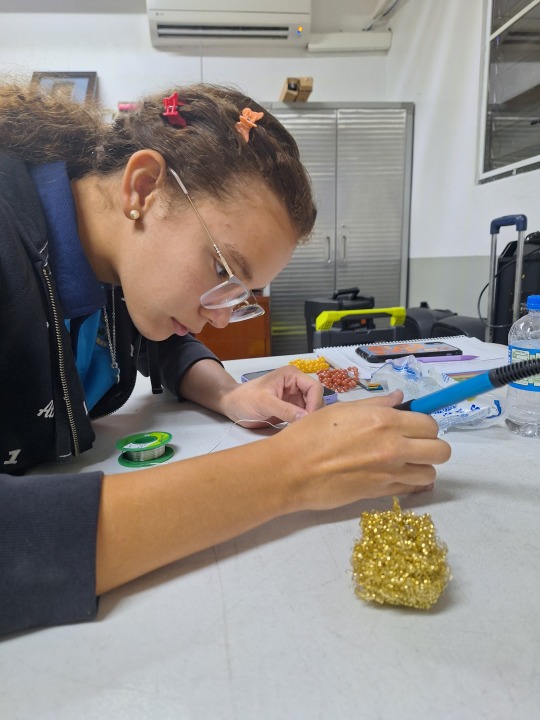
1. Oobleck Reaches the Skies
Oobleck, which gets its name from Dr. Seuss, is a mixture of cornstarch and water that behaves as both a liquid and a solid. Inspired by in-class science experiments, high school students at Colegio Otoqui in Bayomón, Puerto Rico, tested how Oobleck’s properties at 80,000 feet aboard a high-altitude balloon are different from those on Earth’s surface. Using sensors and the organic elements to create Oobleck, students aimed to collect data on the fluid under different conditions to determine if it could be used as a system for impact absorption.
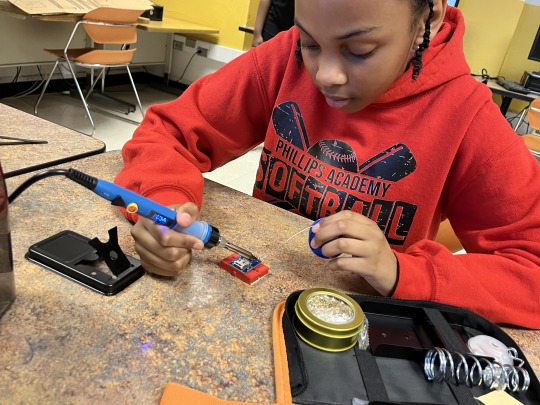
2. Terrestrial Magnetic Field
Middle school students at Phillips Academy International Baccalaureate School in Birmingham, Alabama, tested the Earth’s magnetic field strength during the ascent, float, and descent of the high-altitude balloon. The team hypothesized the magnetic field strength decreases as the distance from Earth’s surface increases.
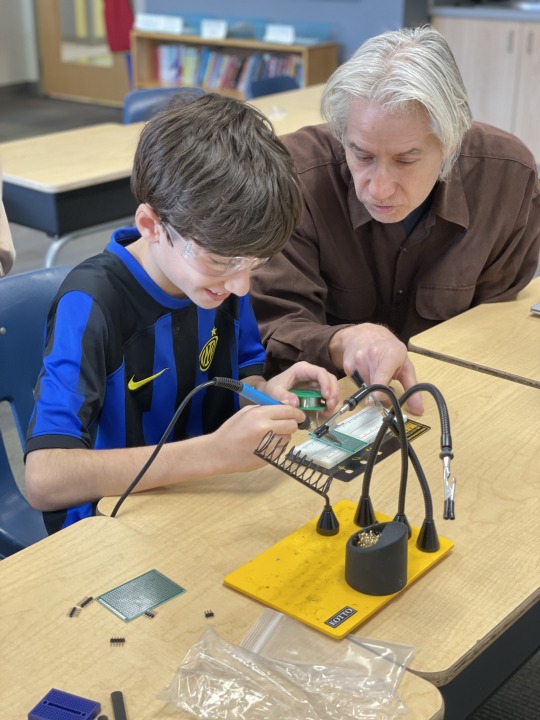
3. Rocket Lander Flame Experiment
To understand the impact of dust, rocks, and other materials kicked up by a rocket plume when landing on the Moon, middle school students at Cliff Valley School in Atlanta, Georgia, tested the vibrations of the Xodiac rocket-powered lander using CO2 and vibration sensors. The team also used infrared (thermal) and visual light cameras to attempt to detect the hazards produced by the rocket plume on the simulated lunar surface, which is important to ensure a safe landing.

4. Rocket Navigation
Middle and high school students at Tiospaye Topa School in LaPlant, South Dakota, developed an experiment to track motion data with the help of a GPS tracker and magnetic radar. Using data from the rocket-powered lander flight, the team will create a map of the flight path as well as the magnetic field of the terrain. The students plan to use their map to explore developing their own rocket navigation system.
youtube
The 2024-2025 TechRise Challenge is now accepting proposals for technology and science to be tested on a high-altitude balloon! Not only does TechRise offer hands-on experience in a live testing scenario, but it also provides an opportunity to learn about teamwork, project management, and other real-world skills.
“The TechRise Challenge was a truly remarkable journey for our team,” said Roshni Ismail, the team lead and educator at Cliff Valley School. “Watching them transform through the discovery of new skills, problem-solving together while being driven by the chance of flying their creation on a [rocket-powered lander] with NASA has been exhilarating. They challenged themselves to learn through trial and error and worked long hours to overcome every obstacle. We are very grateful for this opportunity.”
Are you ready to bring your experiment design to the launchpad? If you are a sixth to 12th grade student, you can make a team under the guidance of an educator and submit your experiment ideas by November 1. Get ready to create!
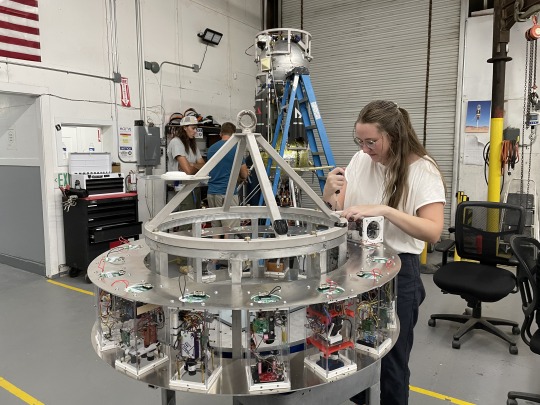
Make sure to follow us on Tumblr for your regular dose of space!
584 notes
·
View notes
Text
Hurricane Milton Resources, Emergency Contacts, and Recovery Assistance
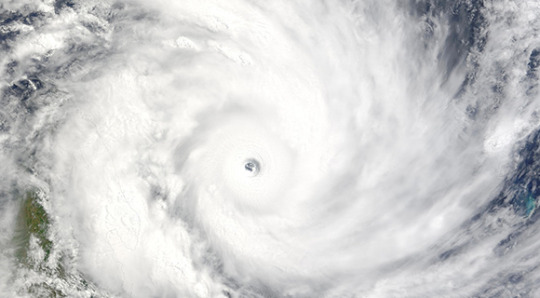
Hurricane Milton is making landfall in Florida, and residents across the state must prepare for the potential devastation it could bring. With forecasts predicting high winds, torrential rain, and widespread flooding, Hurricane Milton could leave communities struggling to rebuild.

New Image Roofing Atlanta gathered information about Hurricane Milton, the damage and devastation it will likely leave in its path, valuable emergency resources, and what New Image Roofing has invested to assist the urgent upcoming recovery efforts.
New Image Roofing Florida 352-316-6008 is ready to assist residents and businesses with roofing and recovery needs. Below is a breakdown of the potential risks, necessary resources, and emergency contacts to help Floridians navigate this challenging time.
Potential Devastation from Hurricane Milton
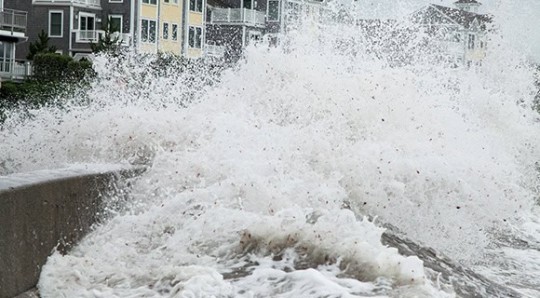
Hurricane Milton’s impact on Florida could be catastrophic. Forecasts show a Category 4 storm, and officials urge everyone to prepare for the worst. The potential damage from this hurricane could include:
Winds up to 150 mph – These extreme wind speeds can tear roofs off homes and businesses, uproot trees, and snap power lines. Flying debris could cause significant property damage and put lives at risk.
Torrential rainfall and flooding – Milton is expected to dump up to 20 inches of rain in certain areas, leading to flash flooding in low-lying regions. Coastal areas face the added threat of storm surge, which could inundate homes and infrastructure.
Watch this video to grasp the dangers of storm surge (a storm surge of 15 feet is expected with Hurricane Milton).
youtube
Power outages – Downed power lines will likely cause widespread outages. These outages may last days or weeks, leaving communities without access to essential services.
Tornadoes – Hurricane Milton’s powerful system could spawn tornadoes, particularly in the eastern parts of the state, causing additional destruction.
Watch this video to see Hurricane Milton’s approach to Florida’s west coast.
youtube
New Image Roofing Florida’s Response
New Image Roofing Florida has a strong history of helping communities recover after hurricanes. The company is prepared to assist with Hurricane Milton’s aftermath. As part of their commitment to helping Florida rebuild, New Image Roofing teams will be deployed to the most affected regions as soon as it is safe to begin repairs.
Rapid Deployment – New Image Roofing Florida teams are on standby, ready to travel to hurricane-affected areas to begin emergency repairs. Their teams specialize in patching damaged roofs, installing temporary tarps, and providing long-term roofing solutions.
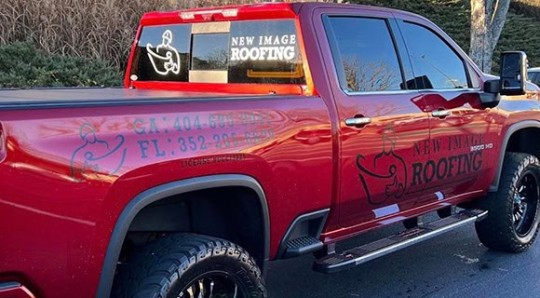
NEW IMAGE ROOFING FLORIDA 352-316-6008
Residential and Commercial Assistance – New Image Roofing Florida is equipped to handle residential and commercial properties. Their priorities are to rapidly secure buildings, prevent further water damage, and help businesses reopen quickly.
Free Inspections and Estimates – The company offers free roof inspections and damage estimates for all affected Floridians.
Experienced Hurricane Recovery Teams – With years of experience handling the aftermath of powerful storms, New Image Roofing Florida will work efficiently to secure homes, schools, businesses, and critical infrastructure.
Federal and State Resources
In the wake of Hurricane Milton, Floridians will rely on various state and federal agencies to provide essential services. Below is a list of important contacts and resources for emergency assistance, shelters, and recovery support:
Federal Emergency Management Agency (FEMA)

Website: fema.gov Phone: 1-800-621-FEMA (3362)
Services: FEMA provides disaster relief assistance, including temporary housing, emergency financial aid, and infrastructure repair.
American Red Cross

Website: redcross.org Phone: 1-800-RED-CROSS (733-2767)
Services: The Red Cross offers shelter, food, and medical support during and after disasters.
Florida Division of Emergency Management (FDEM)
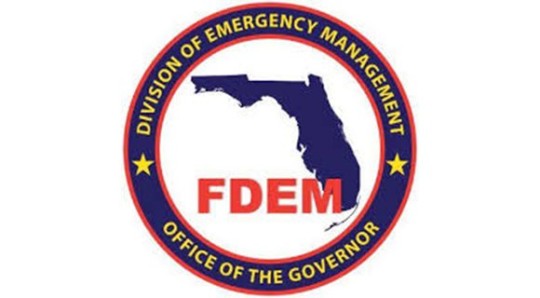
Website: floridadisaster.org Phone: 850-815-4000 State Assistance Emergency Line: 1-800-342-3557 Florida Relay Service: Dial 711 (TDD/TTY)
Services: FDEM coordinates state-wide emergency response, disaster recovery, and evacuation orders.
New Image Roofing Florida

Website: newimageroofingfl.com Phone: 352-316-6008
Services: New Image Roofing Florida provides full-service emergency roof inspections, patching up damaged roofs, installing temporary tarps, and providing long-term roofing solutions. The company will also coordinate/attend adjusters meetings with your insurance agency.
Florida Power & Light (FPL)

Website: fpl.com Phone: 1-800-468-8243
Services: FPL provides power outage reporting and updates on restoration timelines.
National Flood Insurance Program (NFIP)
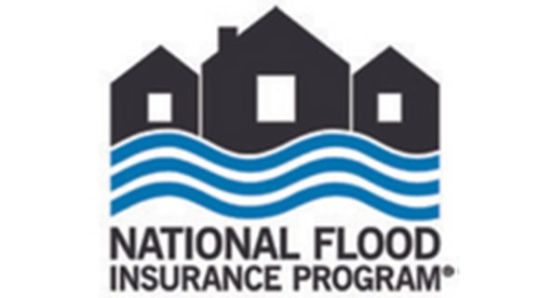
Website: floodsmart.gov Phone: 1-888-379-9531
Services: NFIP provides information about flood insurance policies and assistance with claims after flood damage.
Florida Department of Transportation (FDOT)

Website: fdot.gov Phone: 1-850-414-4100
Services: FDOT manages road closures and traffic conditions. They provide real-time updates about safe evacuation routes and road repairs after a storm.
Local Florida County Emergency Services
Each Florida county has emergency management teams coordinating shelters, first responders, and relief efforts. Check your county’s website for specific contact numbers and resources. At-risk counties include:
Charlotte Citrus De Soto Flagler Glades Hardee Hernando Hillsborough Manatee Pasco Pinellas Sarasota Sumter
Visit WUSF (West Central Florida’s NPR station) website for valuable local information, emergency shelter, and guidance.
Website: wusf.org
Hurricane Season Risks and Preparedness
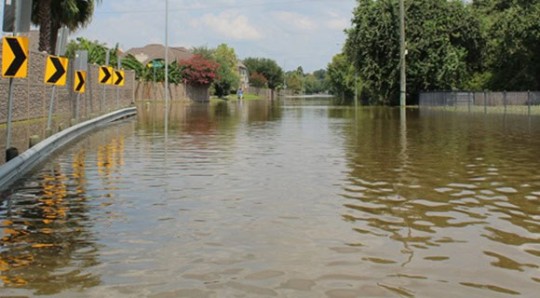
Florida’s hurricane season runs from June 1 to November 30. Hurricane Milton is hitting just as the state braces for more potential storms. The danger doesn’t end when the hurricane passes. After a storm like Milton, communities are left vulnerable to future weather events. The risk of another hurricane striking Florida before Milton’s recovery remains high.
Weakening Infrastructure – After Milton, homes and businesses will be more susceptible to damage from weaker tropical storms or hurricanes. Unrepaired roofs and weakened structures could collapse or fail under minimal pressure.
Flooding Risks – Milton’s heavy rainfall and storm surge will saturate the ground and fill waterways. This will leave communities vulnerable to even small rain events, with the potential for additional flooding.
Power Restoration Delays – With Milton causing widespread outages, the power grid may remain unstable for weeks, making it difficult for residents to recover fully before the next storm hits.
Preparing for Future Storms – Residents must begin making plans now for the rest of hurricane season. Stock up on supplies, make sure your property is secure, and stay informed about future weather developments.
Additional Tips for Hurricane Preparedness
To ensure the safety of yourself and your loved ones, follow these guidelines when preparing for a Hurricane:
Evacuate if Ordered – Listen to local officials and immediately evacuate if you are in an evacuation zone. Delaying could put your life at risk.
youtube
Secure Your Property – Install hurricane shutters, trim trees, and secure outdoor items. Consider having your roof inspected by New Image Roofing before the storm hits.

Prepare a Disaster Kit – Include essentials like water, food, medications, flashlights, batteries, and important documents.
Stay Informed – Official sources like FEMA, FDEM, and the National Weather Service offer updates and information.
Read more about hurricane preparedness at newimageroofingatlanta.com/hurricane-preparedness-a-comprehensive-guide
Hurricane Milton Resources and Recovery
In this article, you discovered information about hurricane preparedness, potential severe damage to roofs and homes, post-hurricane emergency services and resources, and how to repair your home and roof after the storm.
Your awareness and preparedness for Hurricane Milton (and coming storms) will minimize damages and help you return to normal in the storm’s aftermath.
Lack of proactive measures and delayed action will leave you uninformed, in life-threatening situations, and severely challenged to get your home and roof repaired after a hurricane sweeps through your community.
New Image Roofing Florida – 352-316-6008
Sources: fema.gov/disaster/current/hurricane-milton climate.gov/news-features/event-tracker/hurricane-milton-rapidly-intensifies-category-5-hurricane-becoming nhc.noaa.gov/refresh/graphics_at4+shtml/150217.shtml?cone
New Image Roofing Atlanta
2020 Howell Mill Rd NW Suite 232 Atlanta, GA30318 (404) 680-0041
To see the original version of this article, visit https://www.newimageroofingatlanta.com/hurricane-milton-resources-emergency-contacts-and-recovery-assistance/
#emergency roof repair#residential roofing#residential roofer atlanta#Hurricane Milton#Hurricane Emergency Resources#Hurricane Milton Emergency#Hurricane#Youtube
33 notes
·
View notes
Text
how the FUCK am I supposed to change the lightbulbs on the twenty-foot ceilings in this apartment????


ALL of the overhead lights in this apartment are like this. (there are a handful of hanging lights that I can change myself.) I understand that there's some kind of grippy lightbulb changer suction cup or basket on a pole you can get at Lowe's or Amazon but a lot of these lights aren't normally recessed, they're beneath covers. And a lot of them are already burned out. (I can also tell that several have normal bulbs behind the cover, which means they were replaced before with the wrong kind of lightbulbs -- the one in the laundry room has two regular bulbs, one burned out, and there's literally no way I can get at it. I'm not climbing on a sixteen-foot ladder, I will die.)
*dubiously* I guess this is what handymen are for. (I mean, in a college town I'm sure I can always hire an enterprising college student to do various things, but perhaps not for the lights. I'm sure one of them would buy my excess mattress, though.)
I'd honestly be willing to try the lightbulb changer on a pole, but I'm not sure I can physically manage it with all of these lights, and the ones behind covers (which includes both bathrooms and the laundry room) I definitely can't. Also I guess I'll send another plaintive text to my property manager. (I am still trying to figure out where trash goes.)
this is a recently renovated apartment, but it is immediately evident to me that the reno was designed by (a) a man who was (b) COMICALLY taller than me (not hard, I'm 5'2.5"), (c) probably left-handed, and (d) didn't actually cook much despite the nice kitchen. (I do have SUBSTANTIALLY more counter space than in the Decatur house, but it would actually be difficult not to have more counter space than in that house -- I dealt with it by having a kitchen cart.)
on the other hand, there are FIVE MILLION outlets in this apartment. so it has that going for it. literally, from where I am sitting in the not-quite-open plan kitchen/dining/living room I can see thirteen outlets and I know there are two more in the office nook (built-in desk!). on the third hand it is a second-story walk-up and if I'd known the stair situation I'm not sure I would have rented it. (I had a video tour but didn't realize the stair situation until I got here.) probably the restaurant below also has twenty-foot ceilings.
this is the kind of apartment that would be a few grand in a city (I looked up the rent for an equivalent apartment in Decatur and it was $3-5K a month), but this is small town South Dakota, so while it's more expensive than my duplex in Decatur, it's not actually that much more expensive, especially considering that it's larger, new appliances, washer/dryer, 2 full bathrooms, and parking. also I wanted an apartment that made me feel like a Real Adult Professor and not a graduate student, especially if I had to live in rural South Dakota. (As I have bitched about endlessly, I didn't want to leave Atlanta and I didn't want to leave the Deep South; I'm one of the people who actually wants to live in the South (apparently rare? at least of people I know at my previous institution who were all like 'I don't know how I ended up here') and I do expect to go back on the market in an attempt to move back, TT job or not, unless I absolutely fall in love with this school/town. though if I absolutely hate living here, I can move to one of the nearby cities and commute (there's one half an hour away over the state line, and one an hour away in the same state). but like, I wanted to stay in the South and the universe said the best it could do was South Dakota.
but also jesus. this light situation makes me nervous. I do own floor lamps (because the Decatur house actually had terrible lighting), but come on, man. also I haven't yet found where I packed the cover for one of the floor lamps. I also can't find the bulbs for my regular non-floor lamps. found the bulbs for one of my floor lamps because they take E12 chandelier bulbs and they were packed in one of my 'random things' boxes. I will be unpacking for...a while.
17 notes
·
View notes
Text

I asked chatgbt to make an image of Florida running out of homeowners insurance and flooded by a hurricane.
* * * *
LETTERS FROM AN AMERICAN
September 27, 2024
Heather Cox Richardson
Sep 28, 2024
Last night, at about 11:10 local time, Hurricane Helene made landfall in the Big Bend area of Florida, where the state’s panhandle curves down toward the peninsula. It was classified as a Category 4 storm when it hit, bringing winds of 140 miles per hour (225 km per hour). The Saffir-Simpson Hurricane wind scale, developed in 1971 by civil engineer Herbert Saffir and meteorologist Robert Simpson, divides storms according to sustained wind intensity in an attempt to explain storms on a scale similar to the Richter scale for earthquakes.
The Saffir-Simpson scale defines a Category 4 hurricane as one that brings catastrophic damage. According to the National Weather Service, which was established in 1870 to give notice of “the approach and force of storms,” and is now part of the National Oceanic and Atmospheric Administration (NOAA), a Category 4 hurricane has winds of 134–156 miles (209–251 km) per hour. “Well-built framed homes can sustain severe damage with loss of most of the roof structure and/or some exterior walls. Most trees will be snapped or uprooted and power poles downed. Fallen trees and power poles will isolate residential areas. Power outages will last weeks to possibly months. Most of the area will be uninhabitable for weeks or months.”
Hurricane Helene hit with a 15-foot (4.6 meter) storm surge and left a path of destruction across Florida before moving up into Georgia, North Carolina, South Carolina, Tennessee, Virginia, and Kentucky with torrential rain, flash floods, high winds, and tornadoes. A record level of more than eleven inches of rain fell in Atlanta, Georgia. At least 45 people have died in the path of the storm, and more than 4.5 million homes and businesses across ten states are without power. The roads in western North Carolina are closed. Moody’s Analytics said it expects the storm to leave $15 to $26 billion in property damage.
Officials from NOAA, the scientific and regulatory agency that forecasts weather and monitors conditions in the oceans and skies, predict that record-warm ocean temperatures this year will produce more storms than usual. NOAA hurricane scientist Jeff Masters noted that Helene’s landfall “gives the U.S. a record eight Cat 4 or Cat 5 Atlantic hurricane landfalls in the past eight years (2017–2024), seven of them being continental U.S. landfalls. That’s as many Cat 4 and 5 landfalls as occurred in the prior 57 years.”
President Joe Biden approved emergency declarations for Alabama, Florida, Georgia, North Carolina, and South Carolina before Helene made landfall. Tennessee governor Bill Lee, a Republican, did not ask for such a declaration until this evening, instead proclaiming September 27 a “voluntary Day of Prayer and Fasting.” Observers pointed out that with people stuck on a hospital roof in the midst of catastrophic flooding in his state, maybe an emergency declaration would be more on point.
After a state or a tribal government asks for federal help, an emergency declaration enables the federal government to provide funds to supplement local and state emergency efforts, as well as to deploy the Federal Emergency Management Agency (FEMA) to help save lives, protect property, and protect health and safety. Before Helene made landfall, the federal government placed personnel and resources across the region, ready to help with search and rescue, restore power, and provide food and water and emergency generators.
The federal government sent 1,500 federal personnel to the region, as well as about 8,000 members of the U.S. Coast Guard and teams from the Army Corps of Engineers to provide emergency power. It provided two health and medical task forces to help local hospitals and critical care facilities, and sent in more than 2.7 million meals, 1.6 million liters of water, 50,000 tarps, 10,000 cots, 20,000 blankets, 70,000 gallons of diesel fuel, and 40,000 gallons of gasoline to provide supplies for those hit by the catastrophe.
FEMA was created in 1979 after the National Governors Association asked President Jimmy Carter to centralize federal emergency management functions. That centralization recognized the need for coordination as people across the country responded to a disaster in any one part of it. When a devastating fire ripped through Portsmouth, New Hampshire, the day after Christmas in 1802, Congress agreed to send aid to the town, but volunteers organized by local and state governments and funded by wealthy community members provided most of the response and recovery efforts for the many disasters of the 1800s.��
When a deadly hurricane wiped out Galveston, Texas, in 1900, killing at least 6,000 residents and destroying most of the city’s buildings, the inept machine government proved unable to manage the donations pouring in from across the country to help survivors. Six years later, when an earthquake badly damaged San Francisco and ensuing fires from broken gas lines engulfed the city in flames, the interim fire chief—who took over when the fire chief was gravely injured—called in federal troops to patrol the streets and guard buildings. More than 4,000 Army troops also fed, sheltered, and clothed displaced city residents.
When the Mississippi River flooded in 1927, sending up to 30 feet (9 meters) of water across ten states, including Arkansas, Mississippi, and Louisiana, killing about 500 people and displacing hundreds of thousands more, President Calvin Coolidge appointed Commerce Secretary Herbert Hoover to coordinate the federal disaster response and pull together the many private-sector interests eager to help out under federal organization. This marked the first time the federal government took charge after a disaster.
In 1950, Congress authorized federal response to disasters when it passed the Federal Disaster Assistance Program. In response to the many disasters of the 1960s—the 1964 Alaska Earthquake, Hurricane Betsy in 1965, and Hurricane Camille in 1969—the Department of Housing and Urban Development established a way to provide housing for disaster survivors. Congress provided guaranteed flood insurance to homeowners, and in 1970 it also authorized federal loans and federal funding for those affected by disasters.
When he signed the Disaster Relief Act of 1970, Republican president Richard Nixon said: “I am pleased with this bill which responds to a vital need of the American people. The bill demonstrates that the Federal Government in cooperation with State and local authorities is capable of providing compassionate assistance to the innocent victims of natural disasters.”
Four years later, Congress established the process for a presidential disaster declaration. By then, more than 100 different federal departments and agencies had a role in responding to disasters, and the attempts of state, tribal, and local governments to interface with them created confusion. So the National Governors Association asked President Carter to streamline the process. In Executive Order 12127 he brought order to the system with the creation of FEMA.
In 2003, after the September 11, 2001, terrorist attacks on the U.S., the George W. Bush administration brought FEMA into its newly-created Department of Homeland Security, along with 21 other agencies, wrapping natural disasters together with terrorist attacks as matters of national security. After 2005’s Hurricane Katrina required the largest disaster response in U.S. history, FEMA’s inadequate response prompted a 2006 reform act that distinguished responding to natural disasters from responding to terrorist attacks. In 2018, another reform focused on funding for disaster mitigation before the crisis hits.
The federal government’s efficient organization of responses to natural disasters illustrates that as citizens of a republic, we are part of a larger community that responds to our needs in times of crisis.
But that system is currently under attack. Project 2025, a playbook for the next Republican administration, authored by allies of the right-wing Heritage Foundation and closely associated with Republican presidential candidate Trump and vice presidential candidate Ohio senator J.D. Vance, calls for slashing FEMA’s budget and returning disaster responses to states and localities.
Project 2025 also calls for dismantling the National Oceanographic and Atmospheric Administration and either eliminating its functions, sending them to other agencies, privatizing them, or putting them under the control of states and territories. It complains that NOAA, whose duties include issuing hurricane warnings, is “one of the main drivers of the climate change alarm industry and, as such, is harmful to future U.S. prosperity.”
LETTERS FROM AN AMERICAN
HEATHER COX RICHARDSON
#Heather Cox Richardson#letters from an american#American History#weather#hurricanes#Project 2025#FEMA#NOAA#flooding#Army Corps of Engineers#Heritage Foundation
8 notes
·
View notes
Text
You may have read about the shipping containers converted to housing for unsheltered people in Downtown Atlanta. It's called The Melody and it's the product of a City of Atlanta initiative for finding land the city owns and potentially using it for housing.
The effort is supported by an analysis of city properties done by the Government Finance Officers Association (GFOA).
We talk with Kyle Wedberg, Ph.D. Senior Manager, Research and Consulting at GFOA about that analysis, and with Joshua Humphries, Senior Housing Advisor to Atlanta Mayor Andre Dickens.
The great value of making better use of the city's land is clear. But can we also make sure the results are putting lower-income residnets in homes that are part of walkable, transit-served neighborhoods?
Links:
Can Atlanta’s foray into cargo container housing deliver 500 units for unhoused people?
https://atlantaciviccircle.org/2024/01/31/atlanta-to-make-500-affordable-housing-units-for-homeless/
New Uses of Public Assets Are Helping Atlanta Fill Its Affordable Housing Gap
https://www.governing.com/housing/new-uses-of-public-assets-are-helping-atlanta-fill-its-affordable-housing-gap
12 notes
·
View notes
Text
This weekend, children were among those who drowned in a hurricane that battered the entire southeastern United States. North Carolina experienced their worst flooding in more than a century. Cities like Atlanta were dumped with a foot of rain in 48 hours, the worst since 1878. Estimates for property damage alone have already run up to $110 billion, and it will probably go higher. Emergency workers have rescued hundreds of people, trapped on rooftops of homes and hospitals. Thousands are taking refuge in shelters. More than 2 million are without power. Many of them are also without food, fuel, or even water.
People all over the country pleaded for rescue workers to save friends and family from the rising waters, but they couldn’t reach them in time.
The death toll is running into the hundreds.
Floods have closed or completely washed away major roads and highways across Florida, Georgia, Tennessee, and North Carolina. Roads are also closed in parts of South Carolina and Virginia. In North Carolina, nearly 300 roads are shut, including highways. Many of them will stay closed for months.
I have family in Asheville, friends in Boone.
People are trapped.
The floods in the southeast happened on the heels of devastating floods throughout central Europe, killing dozens and causing billions in damage. They weren’t just bad. They were the worst in recorded history, by far. As we speak, a typhoon with 200km winds is heading straight for Taiwan with rainfall expected to be as bad or worse as Helene. The entire world writhes in chaos.
While politicians send thoughts and prayers to victims and generate press by touring the disaster areas, it’s worth pointing out that Congress cut disaster funding out of their most recent funding bill. According to The Daily Climate, FEMA’s disaster relief fund “is in significant deficit, facing a $3 billion shortfall by February 2025 without additional funding.” As one expert said, disaster relief programs “have no money in the bank, essentially, to help people in supporting these long-term recovery and rebuilding efforts.” From Marketplace:
FEMA’s budget has to account for how much it needs to respond to emergencies in real-time, which includes expenses like evacuations, shelters, and food, plus the costs associated with longer-term rebuilding and recovery.
From Politico’s E&E News:
The federal government is facing potentially catastrophic shortcomings in its ability to pay for disaster response due to increasingly costly damage from hurricanes, flooding and wildfires — and the unwillingness of Congress to provide the money.
The head of Homeland Security himself began warning the government about FEMA’s shortfall earlier this summer. The office is responding to roughly twice as many major disasters as they were eight years ago. According to an article in Fortune, FEMA has denied relief to a growing number of cities and states, including Massachusetts when they experienced their worst floods in 200 years. Multiple experts have underscored the need to increase FEMA’s budget so that it can manage the surging number of disasters.
That didn’t happen.
In July, FEMA denied disaster relief aid to Michigan after a series of devastating tornadoes. Governor Gretchen Whitmer personally wrote Biden an appeal pleading for the money. Her letter says, “Damage reports continue to come in as people have lost their homes and businesses. I am appealing the denial of a presidential disaster declaration so we can deliver critical financial assistance to support our resilient families, businesses, and communities.”
She hasn’t heard back yet.
Frustration has grown over the last several years as FEMA denies more requests because they don’t meet the minimum threshold for a disaster declaration. They appear to be raising their cutoff. Given the record number of disasters with no corresponding budget increase, that only makes sense.
So while the news might be reporting that the president is authorizing disaster relief funding for Helene, those funds are running on empty. FEMA is having to implement what it calls Immediate Needs Funding guidance (INF). It enables them to fund emergency relief efforts while they pause longer-term mitigation and disaster recovery projects. It also allows them to continue paying funds out to survivors of disasters if their request has already been completed. So while FEMA can still operate, the truth remains that they don’t have anywhere near enough money to help these states rebuild what’s been lost.
There’s no clear information so far about what help awaits the survivors of Hurricane Helene. When you read accounts of survivors from prior disasters, you find many of them facing an absolute nightmare, filling out endless paperwork while grieving catastrophic losses, waiting months or years for payments to start rebuilding their lives. In the meantime, they have to survive somehow, often moving wherever they can find a job to get by.
Climate scientists predicted this.
In 2019, a study in Nature Communications said that the likelihood of catastrophic 100-year floods has essentially tripled. They can now happen every 30 years or even once every few years. A more recent study in 2023 indicates that these storms will happen every 9-15 years by 2050. That means we will see another Hurricane Helene anytime between now and 2060. We could see several. Toward the end of the century, they will likely become annual events.
My daughter is six.
If she makes it to her 50s or 60s, she’s going to live through a Hurricane Helene almost every single year. Even before then, she’ll live through one roughly every decade. Imagine the cumulative damage of five Helenes.
Let’s zoom out:
We’ve barely entered the age of consequences. FEMA has already started running out of money halfway through hurricane season. They’re already having to pause some operations to prioritize emergency operations.
Imagine what happens to infrastructure when states have to rebuild entire roads, highways, and cities every 5-10 years because they get flooded and washed away in storms that used to happen once every hundred years. We have the science and engineering to build structures capable of withstanding that kind of weather, but it’s expensive and takes time to deploy. Doing that would require a level of coordination that our leaders continually fail to demonstrate.
Congress already doesn’t care.
Meanwhile, the U.S. plans to announce billions more in funding for Ukraine, Israel, and Taiwan. Since 2022, combined aid to these countries has exceeded $200 billion. Compare that to FEMA’s annual budget of barely $20 billion, a small fraction of the projected cost of Hurricane Helene’s damage.
Our politicians are funding war while abdicating their most basic responsibilities to help their own citizens during times of chronic crisis, with millions of people now struggling without food, water, fuel, or shelter. It is a vast understatement to call this reckless and irresponsible.
It is evil.
As for the MAGA climate deniers, it’s nothing short of insane denial to call this chaos “weather.” It’s catastrophically deluded to post articles like Matt Taibbi did recently, calling for vague optimism with statements like “We’ll figure it out.”
We are not figuring it out.
We are floundering.
This has been happening for years now, and for years I’ve done my best to chronicle it. You cannot possibly say we live in a functional democracy, with leaders who care about human rights, while this obscene neglect continues. Americans cannot be expected to continually crowdfund each other’s salvation while giving a quarter of their livelihoods to a corrupt, warmongering government that drowns them in platitudes about hope and justice.
When government agencies predicted roughly twice as many hurricanes this year than the historical average, with a “strong and violent start,” climate deniers and even liberal optimists blew it off as more fearmongering.
The predictions weren’t just accurate.
They were understated.
On top of a negligent government, American culture has become a cesspool of toxic positivity, with a growing majority of the public increasingly concerned with vibes and contrived, forced normalcy that leaves everyone more vulnerable to tragedies like Helene. We can’t afford to keep going in this direction.
While our media and politicians focus on war, scandals, and feel-good moments, the world continues to subsidize the fossil fuel industry at $7 trillion. Our current government and their cheerleaders in the media brag about turning the U.S. back into a leading producer of oil and natural gas.
That’s also evil.
It’s downright shameful in the wake of genocide and historic floods to talk about which administration will be worse for the planet. True leadership would promise action and accountability now, not seek to alleviate their complicity and responsibility by pointing fingers at someone else.
This year, hurricane season will close at the end of November.
We don’t know what will happen next.
Some of us have wondered if there’s anywhere on this continent, or the entire world, where we could go to escape or at least forestall this nightmare. The mountains of Appalachia offered a little hope, if you could possibly afford to get there. It was unthinkable that floods from a hurricane would touch that area. Then it happened. This weekend, we learned definitively that no place is safe. We’re only as safe as the house that shelters us. If it falls, we’re only as safe as what we can carry with us when we have to flee, maybe never to return.
For the last several years, many of us have tried to generate a portrait of our future based on studies, statistics, history, and our imaginations. We’ve read books like Kim Stanley Robinson’s The Ministry for The Future and Octavia Butler’s The Parable of The Sower. We’ve watched shows like Snowpiercer. No matter how much we gathered, it was still hard to see. It was a little fuzzy.
After this weekend, we don’t have to imagine anymore.
We know.
4 notes
·
View notes
Text
Cars Headcanon: Doc's Grandfather
I'm Fleshing out the characters for a Cars fanfic. Gonna revisit Doc's grandfather now that I have a more solid idea of how he fits into the story.


Doc's grandfather was Otis James Glenrunner (factory designation: O50E1927185CU05121905 Cycle 9, Rotation 183, Batch 12B). He was the youngest of three children sired by Samson Glenrunner and Aiofe Maeve Glenrunner nee O'Brien…though his siblings wouldn't survive the Desert Days, a mega-drought that followed the Factory Wars, crippling the world economy between 1876 and 1897. He was modeled in the likeness of an Old World, 1927 Oldsmobile model 50E coupe, and was manufactured on 05/12/1905 at the Oldsmobile Factory in Detroit, Michigan.
Otis' parents survived the Desert Days by partnering with another, prominent, family in the area--the Longhaulers--fixing 'em up in exchange for a portion of their corn and lumber. Otis' father was able to turn the crops and wood into an ethanol-based fuel, that wasn't near as good as gasoline, but it was better than a lot of other "poor fuels" being cooked up at the time. They'd turn the leftover corn into moonshine to extend its shelf-life…and sell it to make additional cash.
Otis learned the family trades, and was an expert mechanic by the time he was eight. When prohibition started in '15, he helped his father run moonshine to Atlanta, and took a more active role in maintaining the still. Two years later, the ATF raided the garage and destroyed the still. His father was shot trying to protect it, and would succumb to his wounds a week later.
Following his passing, Otis took over running the garage, and immediately started work on a new still, but this time around, he was gonna make it much harder to find. His friend, Skids Longhauler, gave him a map of the old underground anthracite mines, and while exploring one day, he happened to find a ventilation tunnel that ran under his property. He shored up the walls, extended the tunnel to a nearby creek and with some help from Skids and his brother, Spinney, they were able to divert half of the creek's flow through the tunnel and used it to make an industrial-grade still.
By '19, he had made enough money selling moonshine that he was able to add a convenience store to the garage, rebranding the business Glenrunner's All-in-One. He married Elizabeth Marie Owen in '20, and the pair would sire twin boys, Carl and James, that same year. The Great Depression of '21 would hit the town hard, and many of the Glenrunner's, including Otis' mother and step-father, would give up on the town and head north. Otis and his wife decided to stay, with Otis managing the garage and Elizabeth running the store.
Once Carl and James were four, Elizabeth began training them to run the store seeing as neither wanted to become a mechanic. Otis and Elizabeth would sire a daughter, Annette, in '25. Three months later, while closing up the shop, Elizabeth began complaining of intense pain near her coupling panel. As there wasn't an actual hospital in town, Otis asked Skids' if he could help transport her to Atlanta, but she collapsed just as they were getting ready to leave…and died an hour later. Her cause of death was ruled to be "complications from siring," though Otis had a strong suspicion that the technician who serviced her at the Cadillac factory was somehow complicit. James and Carl, despite only being five, stepped up to help him run the shop…and when Annette turned five, Otis began teaching her mechanical engineering.
About that time, Skids was injured in a freak logging accident. Spinney called Otis to the line, but the injuries to Skid's cabin were too severe, and Otis could only watch as his best friend died in front of him. Spinney was devastated. He blamed Otis for Skid's death, and the once amicable relationship between the Longhaulers and the Glenrunners began to wane.
His daughter, Annette, married Spinney's son (and Skid's nephew), Samuel Longhauler, in '36, much to his surprise. Everything seemed good for a time. However, Annette and Sam were unable to sire children together. Diagnostic scans of Annette's reproductive hardware revealed nothing out of sorts, and Otis began to suspect that Spinney knew his son was sterile and wanted him to marry Annette as a way of getting back at Otis.
In '38, Annette had an affair with the wanted outlaw, Diesel O'Twill, whom was badly injured in the collision that actually stopped his daughter from killing herself. Otis recognized the tripper right away, and did everything in his power to speed along "Ghost's" repairs...not wanting to attract the wrong sort of attention to his garage...and the still hidden underneath it. Despite being angry with Annette for doing something so rash...he accompanied her to Detroit to pick up his grandson.
Otis, James and Carl were arrested in '47 when the ATF raided the garage looking for Annette's son, Hudson. Upon being released in '53, he was horrified to discover that Annette had worked herself near to death trying to keep the business running with only Sam to help her. He took on some of her work at the garage, hoping that the lighter workload would help her recover, but Hud's crash in '54 combined with Sam's untimely passing in '58 was too much, and Otis would lose his beloved daughter in '59 due to cabin fatigue.
He and his sons kept running Glenrunner's until '89, when Carl passed due to natural causes. He and James would retire soon after that, selling the business and moving to Buffalo, New York. There they would open the Hidden Still Distillery, selling various types of whiskey as a way to keep busy and make a bit of cash.
Like most everyone else in the country, they were watching the tie-breaker race between Lightning McQueen, Chick Hicks and Strip Weathers…and were shocked and surprised to see that Hud was alive and well…and, once again, involved in racing. It wouldn't be until '08 that they'd be reunited, flying out to Radiator Springs to spend a few weeks with Hud, catching up and otherwise enjoying his company. James would pass in '13, and Otis would pass in '15, having outlived all of his children and grandchildren.
Personality wise, Otis was intelligent, shrewd and innovative. He was also a loving and devoted father and husband who would do anything to protect his kids. But he was also a rule breaker, willing to straddle the grey area between morally justified and questionable if it would ensure his family's safety and/or security.
Interesting Facts: He and Elizabeth's marriage was arranged. He was a good brawler, and held his own against Spinney, a pickup truck, when the two of them got into a physical altercation over the whole Annette/Sam infertility debacle. He was an excellent singer, specializing in Old World music. He had hidden compartments all over his body from his time as a whiskey tripper.
#cars#cars fandom#pixar cars#cars pixar#doc hudson#cars 2006#cars fanfiction#cars headcanons#disney cars#disney pixar cars#cars oc
13 notes
·
View notes
Text
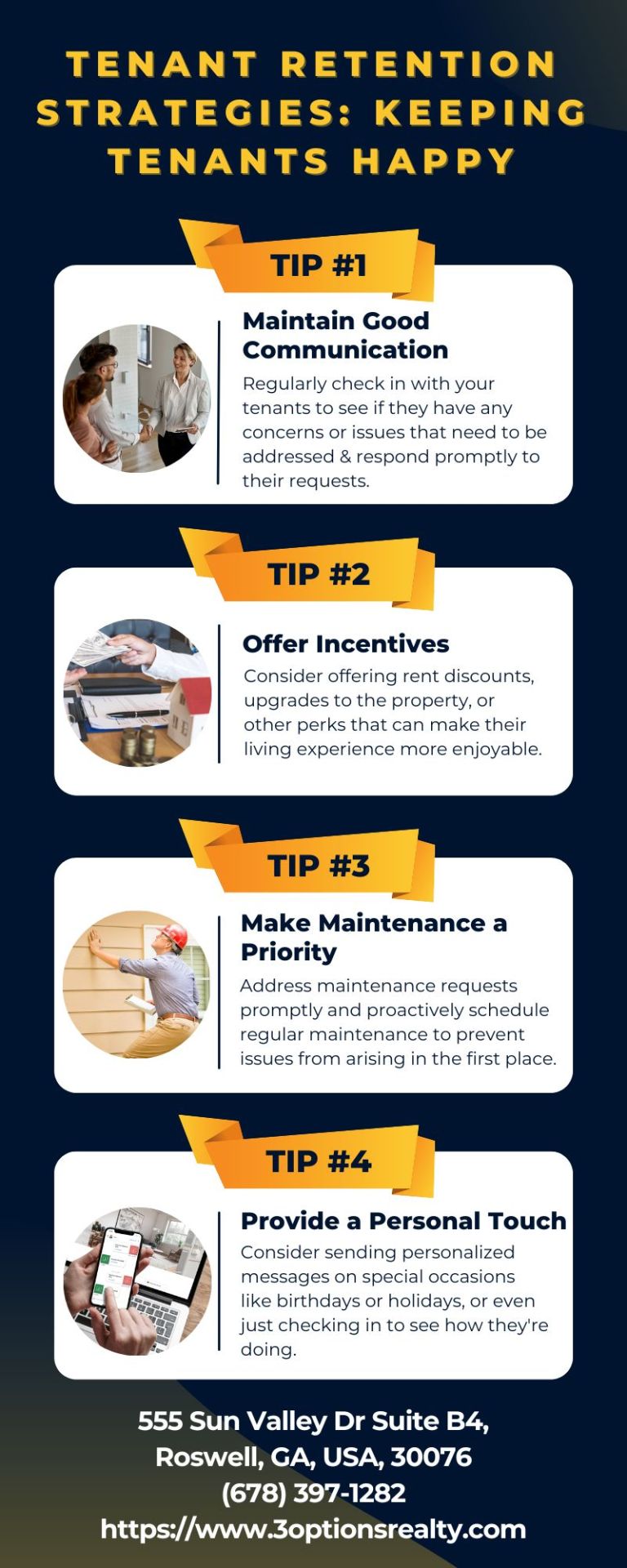
Tenant retention strategies are the cornerstone of a successful property management approach. By prioritizing tenant satisfaction and implementing proactive measures to address their needs, property managers can foster a positive and harmonious living environment. Happy tenants are more likely to renew their leases, leading to increased occupancy rates and reduced turnover costs. Additionally, word-of-mouth referrals from satisfied tenants can attract new, high-quality renters, further enhancing the property's reputation. Investing in tenant retention not only strengthens the landlord-tenant relationship but also ensures a stable and profitable rental business. Ultimately, by keeping tenants happy and engaged, property managers create a win-win scenario, where both tenants and property owners benefit from long-term, mutually beneficial relationships. If you want to hire a reliable property management company in Atlanta to manage your rental properties then get connect with 3 Options Realty right away. For more details call us at (678) 397-1282 or visit our site now.
#real estate#rental property management#property management company#tenant retention strategies#property maintenance#property management#property managers in Atlanta#property management company in Atlanta
3 notes
·
View notes
Text
Atlanta Commercial Real Estate

Unlock Opportunities For Your Business in the Atlanta Commercial Real Estate Market
Welcome to the heart of opportunity—Atlanta, Georgia, where our thriving commercial real estate market stands as a beacon for businesses seeking growth and prosperity. Nestled in the bustling southeastern United States, Atlanta offers more than just a strategic location; it's a dynamic hub flowing with possibilities. Learn more as we explore what makes Atlanta the premier destination for your commercial real estate ventures and discover the advantages awaiting your business.
Strategic Location and Connectivity
Our city seamlessly connects us to the world through the renowned Hartsville-Jackson International Airport, ensuring unparalleled accessibility for businesses aiming to expand regionally or nationally. Atlanta’s strategic positioning makes it a coveted choice for those seeking to amplify their reach.
Diverse Industry Sectors
In Atlanta, diversity isn't just a buzzword; it's the cornerstone of our thriving commercial real estate market. From tech titans to healthcare heroes, Atlanta accommodates a plethora of industries, ensuring that every business finds its perfect match in our vibrant landscape.
Growing Economy
Atlanta isn't just growing; it's thriving. Fueled by a potent mix of corporate giants and burgeoning startups, our city nurtures innovation and fosters growth like no other. With each passing day, Atlanta solidifies its status as an economic powerhouse, attracting investment and driving demand for commercial real estate.
Variety of Commercial Real Estate Options
Whether you're dreaming of a sleek downtown office space or a sprawling suburban warehouse, Atlanta has it all. Our diverse portfolio of commercial properties caters to every need and aspiration, ensuring that your business finds its ideal home amidst our dynamic landscape. Additionally, Atlanta boasts mixed-use developments that combine retail, office, and residential spaces, providing a dynamic environment for work, leisure, and living.
Affordability
Atlanta's commercial real estate market offers affordability without compromising quality. Compared to other major cities, our rates are competitive, allowing businesses to stretch their resources further and invest in their growth with confidence.
Supportive Business Environment
At the heart of Atlanta lies a community dedicated to your success. From government incentives to bustling networking events, our city pulls out all the stops to support businesses of every size and sector. In Atlanta, your success isn't just a goal; it's a shared mission.
Conclusion
Atlanta isn't just a city; it's a promise of growth, opportunity, and success. With its strategic location, diverse industries, booming economy, expansive property options, affordability, and unwavering support for businesses, Atlanta stands as the ultimate destination for commercial real estate ventures. So why wait? Contact us today and allow Stratus help your business dreams come to life amidst a landscape brimming with possibilities!
#https://stratuspg.com/portfolio/#Atlanta Commercial Real Estate Market#Atlanta Commercial Real Estate#Commercial Real Estate Market#Commercial Real Estate#Commercial Real Estate In Atlanta#Commercial Properties#Atlanta Commercial Properties#Commercial Real Estate Market in Atlanta#Atlanta Business Opportunities#Atlanta Economic Growth#Atlanta Commercial Real Estate Trends#Atlanta Office Space#Atlanta Warehouse Properties#Atlanta Business Support#Commercial Real Estate Trends#Real Estate Investment Strategies#Property Management Tips#Office Space Leasing#Retail Space Development#Multifamily Property Investment#Commercial Real Estate Financing Options#Industrial Property Market Analysis#Commercial Real Estate Technology
0 notes
Text
No matter what the industry is, hiring the right people is essential for success. This holds true for property managers who must ensure the smooth functioning of residential and commercial properties. In this article, we will discuss the top six hiring tips for property managers to help you build a strong team. Learn more - https://bizaims.com/top-6-hiring-tips-for-property-managers/
0 notes
Link
Some of the tenants may have bad credit scores and tons of debt or have lawsuits levied on them. It is a blunder to give the apartment to someone who does not have a steady income and pays rent on time. Rental Property Management in Atlanta Ga will put them under the lens and find out whether the applicant is fit to give your apartment.
0 notes
Text


An article by Linda Simensky on Ed, Edd n' Eddy, published in the summer 1999 edition of Take One magazine. Full issue here. Transcript under the cut.
One day in 1996, I got a fax at the Atlanta head office of the Cartoon Network where I am vice president of original animation. It was from Vancouver animator Danny Antonucci. Danny had sent me a drawing of threee goofy looking guys, with the title Ed, Edd 'n' Eddy, and the tagline: "They're friends because they have the same name." "What do you think?" he wrote. Hilarious, I remember thinking. I remembered that back in 1974, I used to hang out with two girls in my neighbourhood, Linda J. and Linda V. We didn't have much in common other than living in the same neighbourhood and having the same name. I immediately identified with the concept and series as a whole.
Well, actually there were several more steps before that last part happened but they were easy. I showed the fax to Mike Lazzo, the senior vice president of programming and production at the Cartoon Network, and he laughed. "Can we see more? Is there a bible?" he asked. The series bible came through by fax, a few pages at a time, over a period of the next few months. After an affirmative response from Betty Cohen, the president of the Caroon Network, the legal paperwork and deal making began. Not long after, a start-up meeting was held poolside at Chateau Marmont, the one moment of Hollywood glamoue we'd experience. "How soon can you have it ready?" asked the general manager and I watched Danny's eyebrows go up. Thus the Sisyphean task of producing the series began. Up to that point, the Cartoon Network had only produced shows through Hanna-Barbera in Los Angeles. Even shorts that were produced in smaller studios in other cities were produced through Hanna-Barbera. This would be the first show to be produced outside that system and the first to report directly to the Cartoon Network. The fate of our working with independant studios rested with this show. Nothing like a little pressure! In addition, every series we had done had started with a seven-minute short, but this time we were so sure we were on the right track that we jumped right in to serious production.
At that point in time, the Cartoon Network had been putting a great deal of effort into finding properties that weren't just animated sitcoms but were actually cartoons. Visually eyepopping, gag-laden, character-driven and most importantly, funny. Those were our cartoon goals. We were also trying to produce the cartoons by setting up units which would be creator-driven and self-contained. The old Warner Bros. "Termite Terrace" was our model since, as far as we were concerned, that's how the best cartoons were made. In the mid-1990s, Hanna-Barbera produced a series of 48 cartoons. The Cartoon Network went into series production on three of those shorts: Dexter's Laboratory, Cow and Chicken, and Johnny Bravo. We were in development on our next show, Powerpuff Girls, with the Dexter unit, and were starting to put several other projects into development, when we decided the Eds should have their own series.
Antonucci's earlier projects had made him a household name among animators. Lupo the Butcher, his animated short from the lates 1980s was, to some degree, the South Park of its time. I can remember a tape of Lupobeing passed around the office back in 1988, as people told each other, "You got to see this!" A few years later, in 1994, Antonucci started up his own studio, a.ka. Cartoon, in Vancouver to produce his show The Brothers Grunt for MTV. Following that, he spent the next few years doing commercials, promos, network IDs and the opening for MTV's Cartoon Sushi.
He decided to remain in Vancouver and expand his studio to accommodate series production. After working out of a small, five-person studio, a.k.a. Cartoon moved into a loft in the Gastown section of Vancouver and began hiring a full staff to work on the first 13 episodes. Ed, Edd 'n' Eddy is the story of three best friends bound by the same name, gawky social graces and an overwhelming desire to fit in. The series takes place during summer vacation, as the Eds search the cul-de-sac where they live for adventure, acceptance and money to buy candy. Ed is into monster movies and model kits. Edd is the really smart, really quiet and the unnatrually polite one. Eddy is the ringleadrer who loves being the centre of attention. The Eds are driven by their constant quest for cash, mostly for buying jawbreakers.
Their schemes -- childhood ventures -- optimistic profit margins -- and oddball twists.
The other neighbourhood kids round out the stories. Sarah is Ed's whiny younger sister. Rolf is the first-generation immigrant of unknown origin who eats strange things and has a pet goat. Jimmy prefers hanging out with Sarah and finds the Eds too rough. Kevin, the neighbourhood cynic, finds the Eds' ideas stupid. Nazz is the neighbourhood heatthrob and the mysterious Jonny 2x4 has a best friend that is a wooden board named Plank. Rounding out the cast are the neighbourhood bullies, the dreaded Kanker Sisters. The characters are loosely based on Danny's two sons, assorted friends and people he's known throughout his life.
Each half-hour episode is comprised of two, 11-minute cartoons. Typical episodes range from the Eds crashing Nazz's sprinkler party, to dealing with cycles of fads that blow through the cul-de-sac, to Sarah's newfound crush on Edd. Each cartoon is produced "the old-fashioned way" to guarantee the maximum number of laughs. Danny works with the story editor/head writer Jono Howard and a few other writers to generate the story ideas. Each writer then produces one-to-two page outlines with the beats of the story. The outline is handed to two storyboard artists who work out the actions and the gags. The storyboards remain up on the wall for the big pitch, at which point the artists pitch the storyboard to Danny and everyone else in the studio. The receptionist, the accountant and any visitors that day are all included in the pitch audience. The gags and beats that get laughs are keepers. The ones that fall flat get feedback or are reconsidered.
Season one, which premiered January 1999, is doing remarkably well in the ratings. Every now and then the Cartoon Network produces a show that has an impact on popular culture or day-to-day life. Recently, a journalist in Tallahasse, Fla., wrote a column in his local newspaper about his search for the huge jawbreakers his kids saw on Ed, Edd 'n' Eddy. In the April 19 issue of People magazine, in the crossword puzzle, the clue for #45 down was the cartoon show, Ed, ___ 'n' Eddy. Fan Web sites are starting to spring up.
The show has started to appear in other countries via international cartoon networks. A second season has already been ordered for a November 1999 broadcast date. Apparently, puberty is as international as it is unforgiving. Will the Eds ever be shown in their own backyard? Will Canadians ever get to see the "Canadian Squirt Gun" episode in season two? Probably. While Ed, Edd, 'n' Eddy will hopefully be acquired for air on one of the Canadian cable channels, for now you will have to rely on tapes from friends in the United States.
18 notes
·
View notes